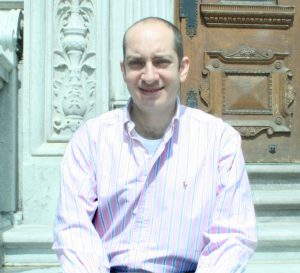
By Katherine Gombay
Cairo is famous for its traffic jams. As one observer put it, ‘rush hour is every hour of the day.’ Cars and busses travel four or five abreast in lanes designed for half that number. Horns blare day and night and gridlock is a way of life. But it doesn’t have to be that way. At least that was the message that Ahmed El-Geneidy took from a lecture that he heard as an undergraduate at the University of Alexandria. Traffic depends on how land gets used in a given region – and who needs to get where to do what. It’s an idea that has a given direction to El-Geneidy’s work for the last fourteen years.
El-Geneidy, who teaches transportation planning, and is the research leader of Transportation Research at McGill (TRAM) , is committed to making cities into places that are more functional, in terms of transportation, for all the people who live and work in them, and especially for the urban poor. Much of his work involves studying urban land use planning and transportation with a critical and constructive eye. Since he moved to Montreal, four years ago, El-Geneidy has also been actively involved with the Ministère des Transports du Québec (MTQ), Société de Transport de Montréal (STM) and the Agence Métropolitaine de Transport (AMT),which is responsible for suburban commuter trains and busses. El-Geneidy and his students helped the STM redesign a bus route that transports 40,000 people each day (the No. 67/467 – an express bus that serves a working class district in the east of the city).
One of El-Geneidy’s PhD students, Kevin Manaugh, has also written about the City of Montreal’s transportation plan, which was tabled in 2008.
There are a number of different transportation projects in the plan that need to be prioritized. Manaugh’s research paper on the subject is currently being circulated at the AMT and the City of Montreal. According to El-Geneidy, the important question to ask as the city tries to set priorities for action, is ‘who’s going to benefit?’ As always, his focus is on the urban poor.
“Billions of dollars will be spent. We need to know where people live and work and how much time they will save,” he said. “We want to make sure that these projects are helping the poor and not just the rich. Like this new shuttle to the airport, where we’ll put million’s of dollars for the shuttle and it will be mainly used by businessmen and tourists. Are we going to make commuter trains more frequent for the wealthy people who already have different ways to travel to work or can we improve transportation systems for the really poor who have no options but to drive? Our work is all about trying to give the poor people and immigrants the largest number of choices.”
